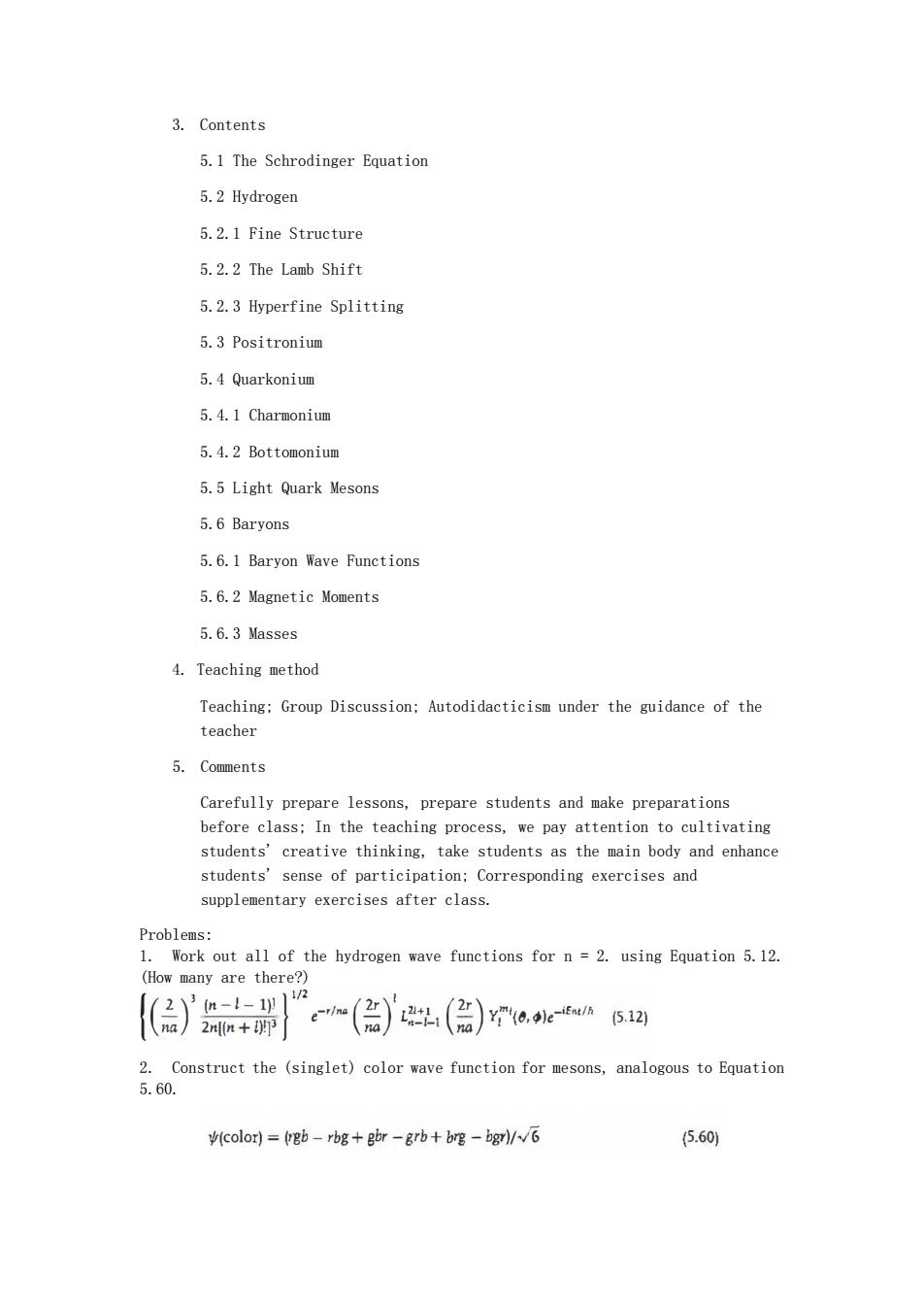正在加载图片...

3.Contents 5.1 The Schrodinger Equation 5.2 Hydrogen 5.2.1 Fine Structure 5.2.2 The Lamb Shift 5.2.3 Hyperfine Splitting 5.3 Positronium 5.4 Quarkonium 5.4.1 Charmonium 5.4.2 Bottomonium 5.5 Light Quark Mesons 5.6 Baryons 5.6.1 Baryon Wave Functions 5.6.2 Magnetic Moments 5.6.3 Masses 4.Teaching method Teaching:Group Discussion:Autodidacticism under the guidance of the teacher 5.Comments Carefully prepare lessons,prepare students and make preparations before class In the teaching process we pay attentior to cultivating students' creative thinking.take students as the main body and enhance students'sense of participation:Corresponding exercises and supplementary exercises after class. Problems: 1.Work out all of the hydrogen wave functions for n =2.using Equation 5.12. (How many are there?) y (5.12) 2.Construct the (singlet)color wave function for mesons,analogous to Equation 5.60. (color)(gb -rbg+gbr -grb+brg-bgr)//6 5.60 3. Contents 5.1 The Schrodinger Equation 5.2 Hydrogen 5.2.1 Fine Structure 5.2.2 The Lamb Shift 5.2.3 Hyperfine Splitting 5.3 Positronium 5.4 Quarkonium 5.4.1 Charmonium 5.4.2 Bottomonium 5.5 Light Quark Mesons 5.6 Baryons 5.6.1 Baryon Wave Functions 5.6.2 Magnetic Moments 5.6.3 Masses 4. Teaching method Teaching; Group Discussion; Autodidacticism under the guidance of the teacher 5. Comments Carefully prepare lessons, prepare students and make preparations before class; In the teaching process, we pay attention to cultivating students' creative thinking, take students as the main body and enhance students' sense of participation; Corresponding exercises and supplementary exercises after class. Problems: 1. Work out all of the hydrogen wave functions for n = 2. using Equation 5.12. (How many are there?) 2. Construct the (singlet) color wave function for mesons, analogous to Equation 5.60